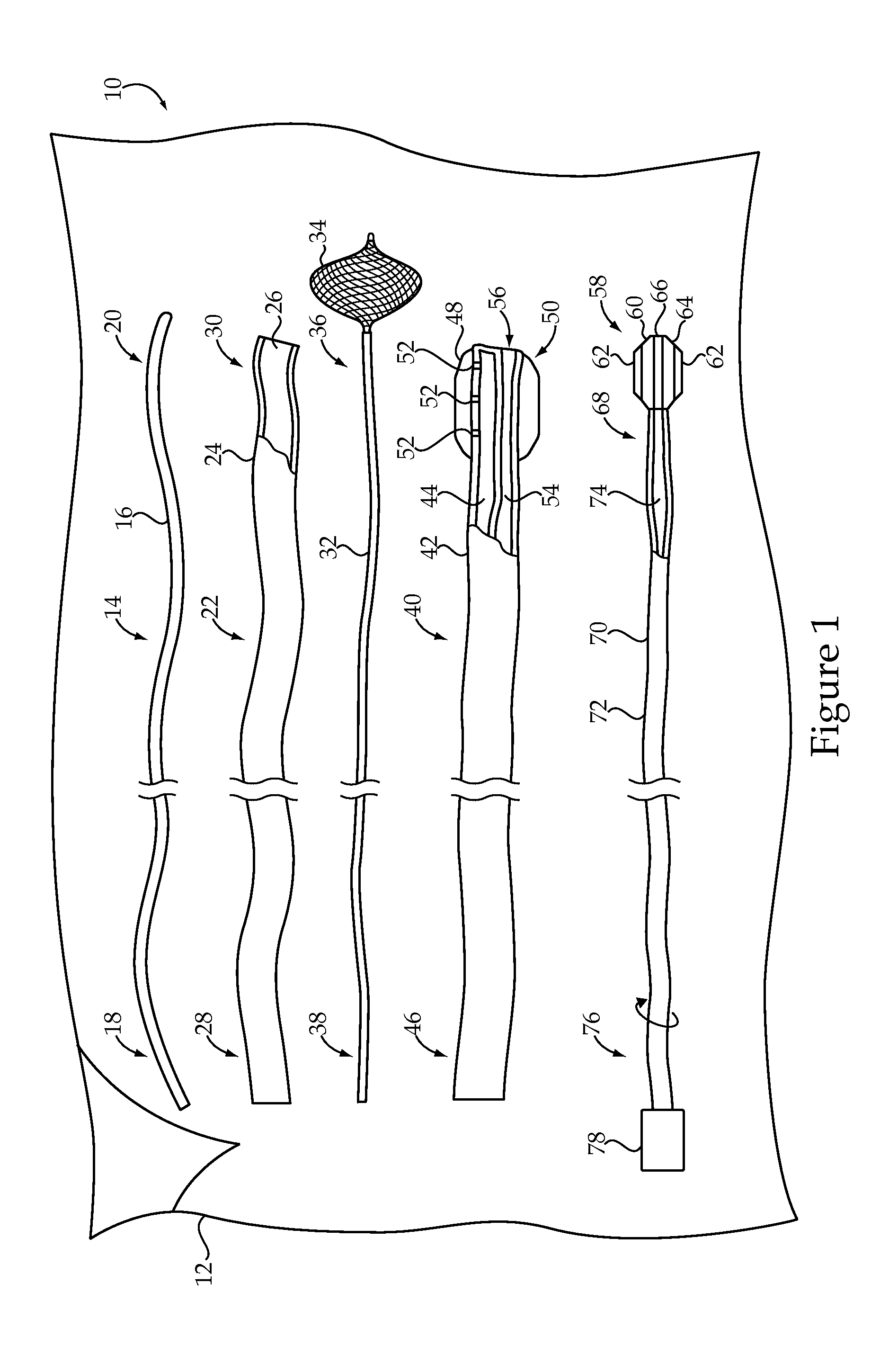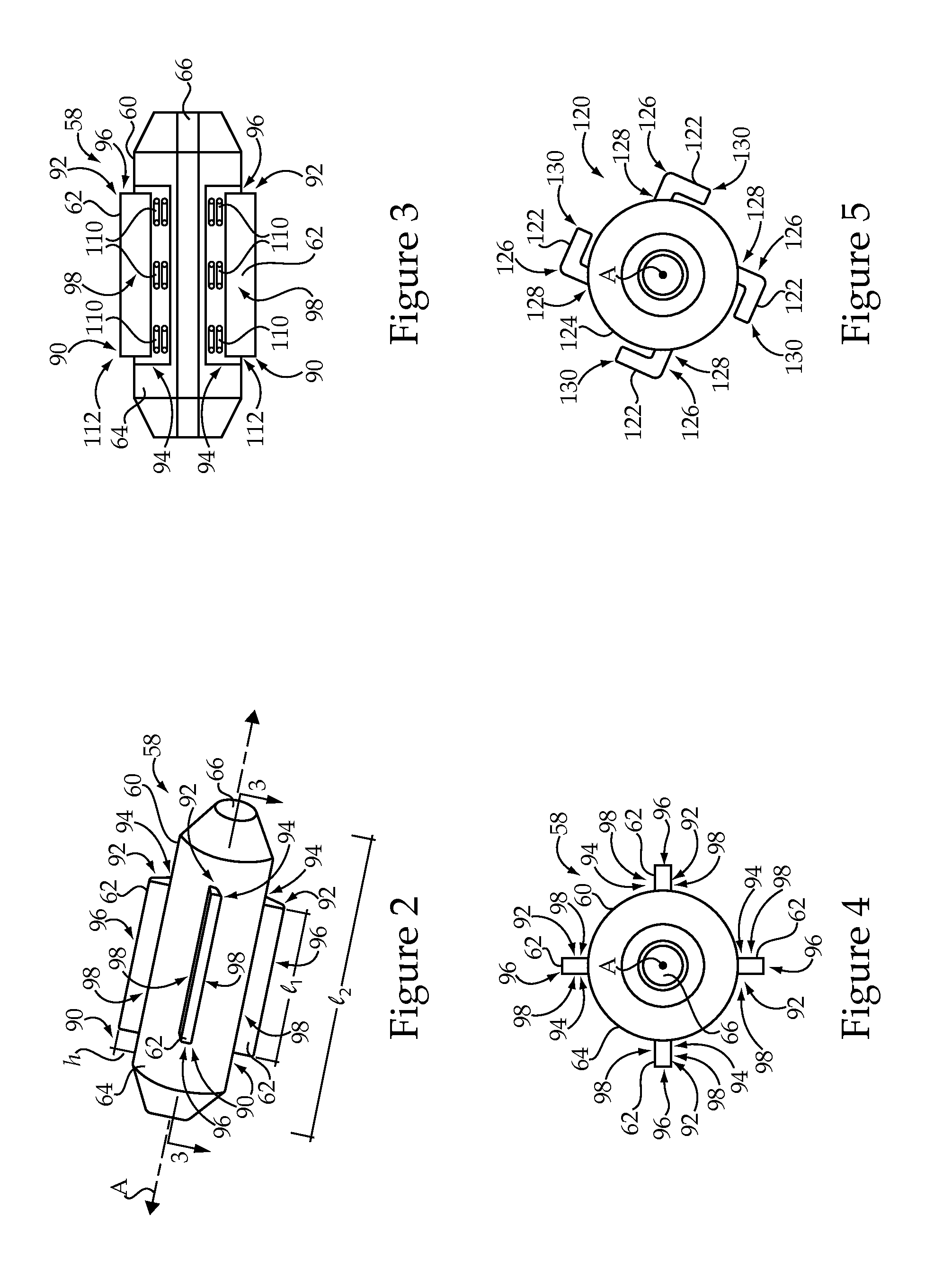Clot removal system and method
a clot and clot technology, applied in the field of clot removal system, can solve the problems of obstructing critical blood flow, affecting the life of patients, and damage to tissues,
- Summary
- Abstract
- Description
- Claims
- Application Information
AI Technical Summary
Benefits of technology
Problems solved by technology
Method used
Image
Examples
Embodiment Construction
[0022]Referring to FIG. 1, there is shown a clot removal system 10 according to one embodiment of the present disclosure. The clot removal system 10 may include a number of components, which may be provided within a sterile, tear open package 12, as is known in the art. In performing a clot removal procedure on a patient, some or all of the components of the clot removal system 10 may be used, depending upon the specifics of the procedure to be performed. As should be appreciated, however, the components shown in FIG. 1 might be separately packaged and / or the clot removal system 10 might also include components in addition to those shown, including components routinely used in percutaneous vascular procedures.
[0023]The clot removal system 10 may include at least one wire guide 14, which is a device commonly used in vascular procedures to introduce a wide variety of medical devices into the vascular system. Generally speaking, wire guide 14 includes an elongate flexible body 16 exten...
PUM
 Login to View More
Login to View More Abstract
Description
Claims
Application Information
 Login to View More
Login to View More - R&D
- Intellectual Property
- Life Sciences
- Materials
- Tech Scout
- Unparalleled Data Quality
- Higher Quality Content
- 60% Fewer Hallucinations
Browse by: Latest US Patents, China's latest patents, Technical Efficacy Thesaurus, Application Domain, Technology Topic, Popular Technical Reports.
© 2025 PatSnap. All rights reserved.Legal|Privacy policy|Modern Slavery Act Transparency Statement|Sitemap|About US| Contact US: help@patsnap.com



